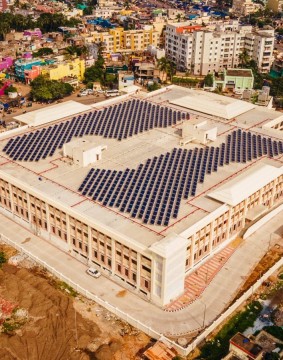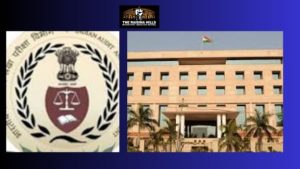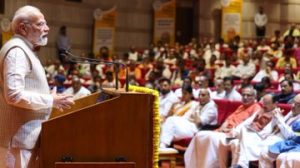Spatial mapping key to spur renewable power in Odisha

Image credit X.com @manas_muduli
Odisha must conduct deep-down power system analysis
Prof. Sanjib Pohit and Pradeep Kumar Panda
New Delhi, Bhubaneswar, September 26: Among the Indian states, energy intensity of Odisha economy has always been on the higher side due to her higher resource (mineral) base. The proximity of minerals has led to development of extraction-based industries in the state.
The abundance of coal resources has fuelled development of coal power in the states both for domestic consumption as well as for exports to other states. Expectedly, the location of energy intensive industries and coal power imply that per capita emission in Odisha would be higher than the national average.
Though the state has taken significant steps to facilitate a transition towards renewable energy and fight climate change, it appears to be moving slowly in formulating a clear decarbonisation roadmap. Among the India states, only a handful of states have clearly underlined the target they have set for achieving net-zero emission.
Also Read: Govt slams Opposition-ruled states for unemployment
Among the Indian states, Odisha is the first state to get its second phase of climate action plan approved from the National Steering Committee on Climate Change (NSCCC) under the Ministry of Environment, Forests and Climate Change (MoEFCC), Government of India.
The Government of Odisha has roped in Council on Energy, Environment and Water (CEEW) to prepare a roadmap for achieving net-zero carbon emission in line with the country’s decarbonisation plan.
Odisha’s Renewable policy envisions to establish a robust framework that can enable Odisha to undertake an inclusive journey towards energy transition through higher adoption of renewable energy (RE) in their power system.
However, Odisha’s power sector like that of India operates on an interconnected grid system. Coordinated efforts and grid integration between states are crucial for optimizing renewable energy generation and ensuring reliable and stable power supply.
Also Read: IPO-bound stocks gain stock market spotlight
At first, in order to ensure the uninterrupted supply of electricity it is necessary to promptly address issues linked to power system losses and malfunctions of the existing grids. Further, to facilitate the integration of renewable energy resources it is necessary to solve the issues with high energy consumption and demand. In terms of socio-economic factor, states with a higher population or energy-intensive industries may require tailored strategies to manage the energy transition while ensuring social equity and economic growth.
To adopt a low carbon pathway in energy sector, a state has to consider a variety of factors, such as energy accessibility, local energy sources, infrastructure, legal frameworks, and socioeconomic conditions. The problem is more challenging for a mining rich state like Odisha States with a higher concentration of energy-intensive industries. Hence, it is essential that to have deep down planning with power system analysis for optimal operation and inclusion of RE technologies in grid.
Over the years, Nordic countries with high penetration of renewable energy in the grid have opted for spatial mapping of available RE resources along with transmission and distribution network and mapping of demand to adopt a low carbon transition pathway with increased share of renewable energy.
Also Read: Multi-agency probe underway on ‘tampering’ of rail tracks
However, this approach namely spatial mapping is yet to take root in the Indian context even though renewable power is expected to play a bigger share in the coming years.
It is important that Odisha undertakes in-depth power system analysis while going forward in a big way for renewable power development in the state.
The analysis of distribution networks and local level power systems would help the power sector in the following way: cost effective pathways to reduce GHG with optimal operation, management and planning of electricity networks, aassessment of transmission infra structure, storage capacity requirement for higher utilization of RE and analysing the technical impacts of the grid due to the high volume of RE integration, assessment of local demand for designing microgrid system, and further linking decentralized power generation, accessibility of the real time data through locational coordinates, coupling of electricity to other energy sectors, such as gas, heating and transport, and investment & system planning for a stable secures networks through assessment of job potential, enhanced per capita power consumption and income generation.
Also Read: Quad leaps into security collaborations for Indo Pacific
There is no alternative but to go for spatial mapping of power system in the state if Odisha intend to increase her share of renewable power in the electricity sector. Sustainable Development Goal (SDG) 7 calls for ensuring access to affordable, reliable, sustainable and modern energy for all. All these measures will help Odisha to achieve SDG 7.
(Prof. Sanjib is with NCAER, New Delhi and Pradeep is Bhubaneswar-based Economist)
Join WhatsApp channel of The Raisina Hills





